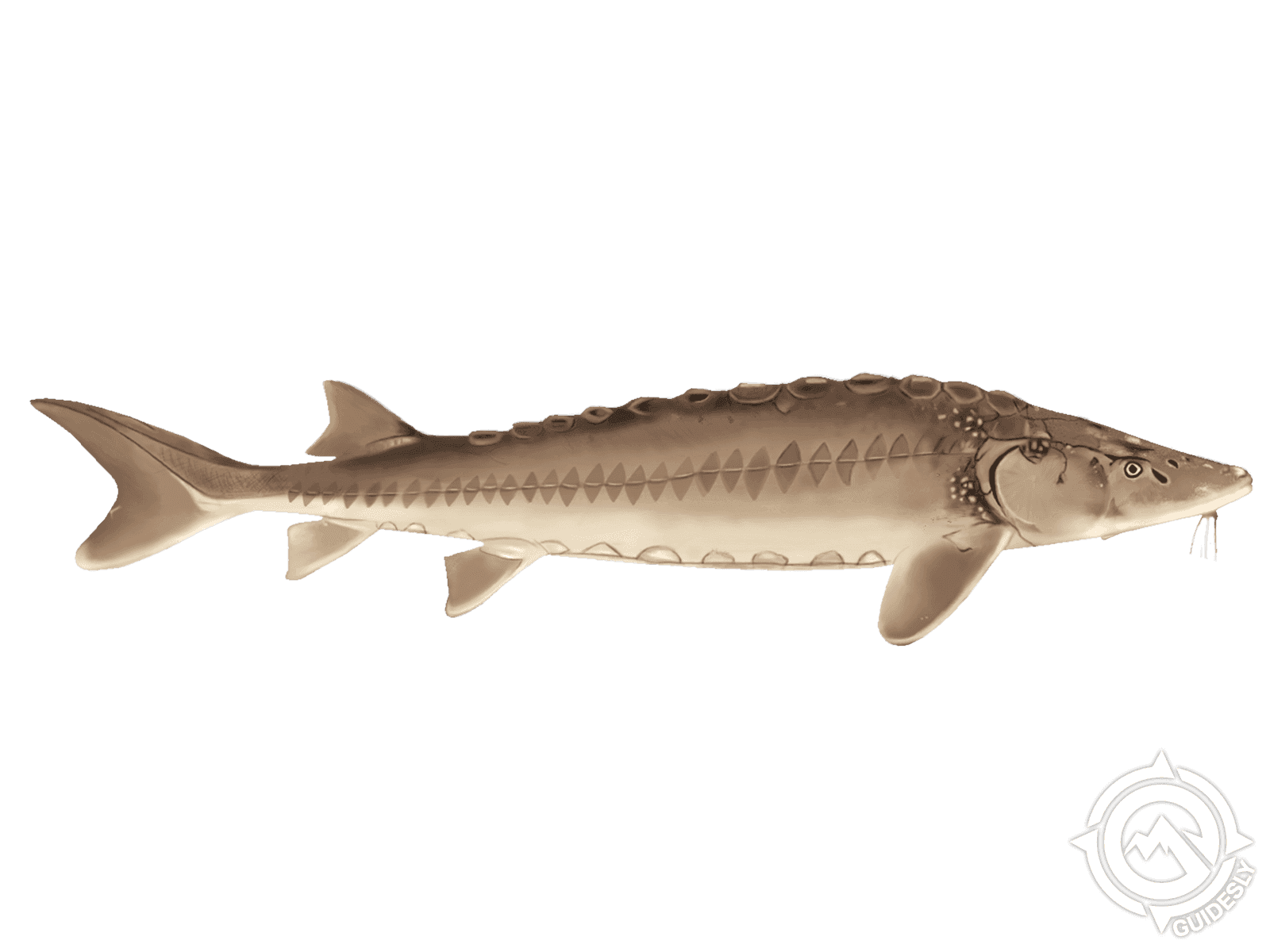Lake Sturgeon

Species Details
Acipenser Fulvescens
Acipenseridae
Acipenseriformes
Onshore
30 - 300 lbs.
36" - 108"
Lake Sturgeon (Acipenser fulvescens) Fish Description
The Lake Sturgeon (Acipenser fulvescens) or Rock Sturgeon is a freshwater gamefish found in almost all water systems across North America. It is also sometimes called the “Prehistoric Fish” as it’s been found that, according to fossil records, it already existed since the Cretaceous period about two hundred million years ago. They are also known for their long lifespan with males reaching up to fifty-five years while females can reach more than a century.
Aside from being the oldest native freshwater fish on the continent, it is also the largest. Females are often much bigger than males as they can measure up to nine feet long and weighing a little more than three hundred pounds. Males, on the other hand, have been known to reach only six feet in length. The biggest verified catch, however, measured eight feet long and weighed three hundred pounds. It was caught in Lake Michigan way back in 1943.
Lake Sturgeons easily be identified because of their rather menacing appearance as well as their size. These freshwater behemoths have a long, sleek body that’s greenish to grey in color. It doesn’t have scales, rather, rows of spiny plates on the sides that act as armor that protects them from abrasions and predators. Much like sharks and rays, most of their bones are cartilaginous, making their body a bit more flexible, which helps them fit into crevices at the bottom of lakes and rivers as they forage for food. And with the help of their four barbels (whisker-like organs) located in the front of their mouth, they can “feel” their way around the lake and river beds and locate their diet, which consists mainly of insects, worms, snails, crayfish, and small fishes.
Interesting Facts About Lake Sturgeon
- The biggest Lake Sturgeon caught on record measured eight feet long and weighed more than three hundred pounds.
- The world record fish was caught by a sports angler in Lake Michigan in 1943.
- Despite its intimidating size and appearance, the Lake Sturgeon is a docile creature.
- They eat by sucking their mostly bottom-dwelling preys into their retractable mouth.
- They have been known to jump in the air during the spawning season.
- They have one of the longest lifespans among freshwater fish with some individuals known to live for more than a century.
- They are also sometimes called “Prehistoric Fish” as fossil records have shown they already existed since dinosaurs still roam the earth.
- They are mostly targeted for their tasty meat and eggs, which are made into caviar by curing in salt.
- Lake Sturgeon populations were once healthy in The Great Lakes but have seen a drastic decline from the late 1800s up to now.
- The population dropped due to overfishing and pollution as well as the construction of man-made structures near and on the waters, which destroyed their natural habitat.
- Strict regulations, including fishing limitations for both sport and commercial fishers, were placed to help with the species’ population recovery.
- Other population recovery measures have also been taken, including taking eggs from their habitat and brought to hatcheries until they reach their juvenile stage when they would be released back into the wild.
- Lake Sturgeon populations have recently reached “safe” levels
Lake Sturgeon Average Size and Swimming Speed
Although there were some reports of Lake Sturgeons reaching six to nine feet long, these sizes are quite rare. Most that can be fished today can only reach three to six feet and weigh between thirty to one hundred pounds on average. Also, Lake Sturgeons can often be seen swimming slowly on river and lake beds, but they can swim quickly in short bursts if they have to, especially when they feel threatened.
Where to Find Them - Habitat and Distribution
They were once abundant in the Great Lakes. And though the populations have grown since regulations were placed, their numbers haven’t fully recovered yet. Aside from the Great Lakes, you can find them in the Mississippi River drainage basin south to Alabama and Mississippi. You may also check out Detroit River and up north to Lake St Clare. You can also fish up north in Canada via Lake Winnipeg as well as both North and South Saskatchewan Rivers and even as far north as the Hudson Bay Lowlands. They are also said to be abundant in Lake Champlain and various Vermont rivers as well as in the lakes and rivers of Wisconsin and Minnesota.
Lake sturgeons are bottom-dwellers, meaning they prefer sandy or gravel habitat at the bottom of a river or lake bed from where they forage for food. That said, you will have a better chance of hooking one near deep holes, eddies and along drop offs.
Lake Sturgeon Fishing Tips
Lake Sturgeons are quite huge so you will need to use tackle that is strong and sturdy enough to handle a fish that weighs 100 pounds or more. You may also need a big landing net and gloves not only because of their size but because they have rough skin as well as bony plates with razor sharp spines, which, of course, can be painful if they made contact with your bare skin. As for bait, a glob of nightcrawlers would be enough to lure these behemoths into your trap.







